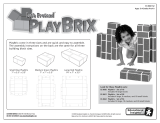2
Abstract
Disk drive capacity has increased at rates similar to those of microprocessor performance. New and
improved interconnect technologies allow the rapid transfer of large amounts of data to and from the
disk. New and more cost-effective applications are made possible by increased storage capacity and
reduced cost per bit. Through innovation and engineering expertise, HP develops industry-leading
disk technologies that optimize overall system capacity, performance, reliability, and value.
This technology brief reviews the classes of disk drives, the key factors determining capacity,
performance and reliability in single drives, the options available to connect the drives to the system,
and the use of multiple drives to further increase performance and reliability.
Introduction
Disk drives provide the primary mechanism for storing and retrieving permanent, or non-volatile, data
in almost all servers, desktop computers, and notebook computers. Disk drives are also increasingly
common in portable electronic devices such as music players and automobile navigation systems.
The key performance differences between main memory (semiconductor RAM) and primary storage
(typically, magnetic disk drives) are speed of access and capacity. Accessing a disk drive is typically
approximately 100,000 times slower than accessing main memory. Primary storage is typically at
least 100 times larger than main memory. Most engineering in disk drive and interconnect
technologies is driven by a desire to simultaneously reduce the difference in access speed and
increase disk drive capacity and reliability. Innovative strategies in disk and disk controller design
continue to deliver dramatic increases in disk capacity, performance, and availability.
Flash memory technology, which has previously been used as a low-performance, lower capacity
storage medium in consumer devices, is being adapted as primary storage in computers. This
technology has the promise of delivering enterprise class storage with lower latencies and
significantly better performance than disk drives. The cost per bit for flash memory is between that of
RAM and traditional disk drives. Flash-based solid state drives that can meet both the performance
and the heavy duty cycle requirements of server storage are being introduced.
Categories of server disk drives
HP has refined and expanded its drive family to offer three distinct classes of server disk drives—
Entry, Midline, and Enterprise drives. Each drive category has a different set of performance,
reliability, and cost/capacity characteristics designed to meet the needs of different environments.
Meeting the requirements of each environment heavily influences both the design and the component
selections for the drives.
HP Entry drives have the lowest unit cost and provide a basic level of reliability and performance.
They are best suited for non-mission-critical environments where I/O workloads are 40 percent or
less. Typical intended applications for Entry drives are internal/archival storage or as boot disks for
entry-level servers.
HP Midline drives provide larger capacity and greater reliability than Entry drives. HP Midline drives
have improved resistance to rotational and operational vibration, so they are better suited than Entry
drives for use in multi-drive configurations. For maximum flexibility, Midline drives are available with
both Serial ATA (SATA) and Serial Attached SCSI (SAS) interfaces.
HP Midline drives are designed for use in high-capacity applications such as external storage that
may require increased reliability. Like Entry drives, however, Midline drives are designed for use in
moderate workload environments and should not be considered for mission-critical applications.













